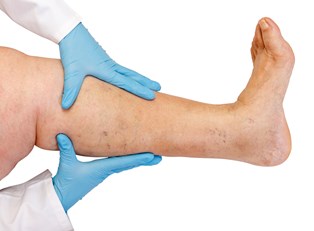Varicose veins are veins that have grown large, twisted, and potentially even painful. Although they are generally not a problem beyond the feeling that they are unsightly, they can actually be painful. Furthermore, it can be indicative of something more serious going on in the cardiovascular system. Here’s a look at how varicose veins form, what particular symptoms they initiate, and complications that may ensue.
Vein Inflammation
Veins are blood vessels that deliver blood to the heart (as opposed to the arteries, which carry oxygen-rich blood away from the heart). Although varicose veins can hypothetically appear anywhere in the body, they most often occur in the legs -- and more often in women than men. The veins have a series of valves that work very much like gates; as the blood travels up, the valve opens to allow the blood through. To keep the blood flowing in the proper direction, the valves will not allow it back down. In varicose veins, however, these valves are not working properly. Blood can sneak back the other direction, pooling in the vein and causing the veins to swell. If the walls of the veins are weak, this can also cause varicose veins (or “varicosities”), as can phlebitis, an inflammation of the veins.
Mild Varicose Veins
Inflammation is the characteristic symptom of varicosities. They may take on a blue or purplish color as the blood gathers, create cord-like protrusions, and bulge sufficiently as to become visible beneath the surface of the skin. They may seem to have a knotty or gnarled appearance, as they twist and turn from the excessive blood. Patches of veins may begin to swell, creating a web-like structure of varicosities on the leg, especially the thighs and calves. For most cases of varicose veins, this is the extent of the symptoms: big, visible, twisty, purple lines along the legs.
Severe Varicose Veins
In other, more serious (and rare) instances, varicose veins may be physically evident. They can create a sensation of heaviness in the leg, perhaps accompanied by an aching discomfort. The muscles may hurt, plagued by a prickling or cramping of the muscles. The lower legs may swell. If you are in the same position, particularly sitting or standing, for long periods of time, this may make the issue worse. The veins may bleed, and even create ulcers that can take a long time to heal. Additionally, the vein and surrounding skin can become hard; the skin may also have some discoloration, generally reddish. These signs, however, can be indicative of a much more serious vascular disease. Seek medical assistance immediately.



